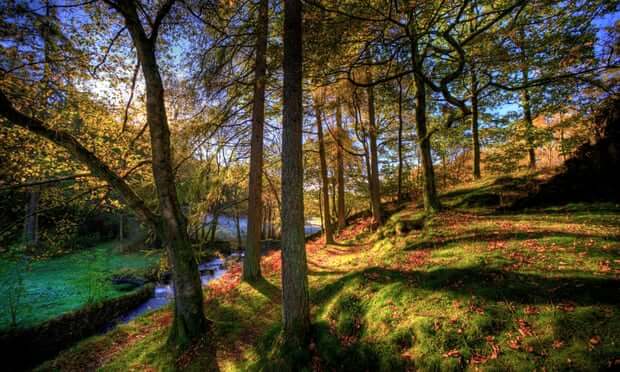Nature-rich sites such as woods and wetlands more valuable because of the ‘ecosystem services’ they provide.
The economic benefits of protecting nature-rich sites such as wetlands and woodlands outweigh the profit that could be made from using the land for resource extraction, according to the largest study yet to look at the value of protecting nature at specific locations.
Scientists analysed 24 sites in six continents and found the asset returns of “ecosystem services” such as carbon storage and flood prevention created by conservation work was, pound for pound, greater than manmade capital created by using the land for activities such as forestry or farming cereals, sugar, tea or cocoa.
The study, which was led by academics at Cambridge University with the Royal Society for the Protection of Birds (RSPB), suggests further modifying nature for human use could be costing society more than it benefits it, but these “natural capital” costs are often not taken into account by decision-makers.
It echoes the findings of a landmark review released last month by Prof Sir Partha Dasgupta, the Cambridge economist, which warned that the failure of economics to take into account the depletion of the natural world was putting the planet at “extreme risk”.
For the latest study, scientists worked out the annual net value of the chosen sites if they stayed “nature-focused” compared with an “alternative” non-nature focused state over 50 years. They valued each tonne of carbon as worth $31 (£22) to global society, a calculation generally considered to be quite conservative.
More than 70% of these nature-rich sites were found to be worth more in net economic benefits to people if they were left as natural habitats, and all forested sites were worth more with the trees left standing, according to the paper, published in Nature Sustainability. This suggests that even if people were only interested in money – and not nature – conserving these habitats still makes financial sense.
Researchers found a salt marsh called Hesketh Out Marsh on the Ribble estuary in Lancashire, was worth $2,000 (£1,450) a hectare ($800 an acre) in mitigating carbon emissions alone, which was greater than any money that could be made from growing crops or grazing animals on it. Many ecosystem services are still not easily evaluated economically and the results are likely to be conservative estimates, researchers say.
The study’s lead author, Dr Richard Bradbury, head of environmental research at the RSPB and an honorary fellow at Cambridge University, said: “As a conservation scientist at RSPB, you have to be acutely aware of your potential prejudices and be as neutral as possible in the analysis. Yet I was still surprised at how strongly the results favoured conservation and restoration.”
This analysis assumes that carbon is properly accounted for, but even without taking into account the value of carbon, natural sites are still more valuable 42% of the time when left as they are. Dr Kelvin Peh, of Southampton University, a co-author of the study, said: “People mainly exploit nature to derive financial benefits. Yet in almost half of the cases we studied, human-induced exploitation subtracted rather than increased economic value.”
Read the rest here: https://www.theguardian.com/environment/2021/mar/08/land-could-be-worth-more-left-to-nature-than-when-farmed-study-finds-aoe
